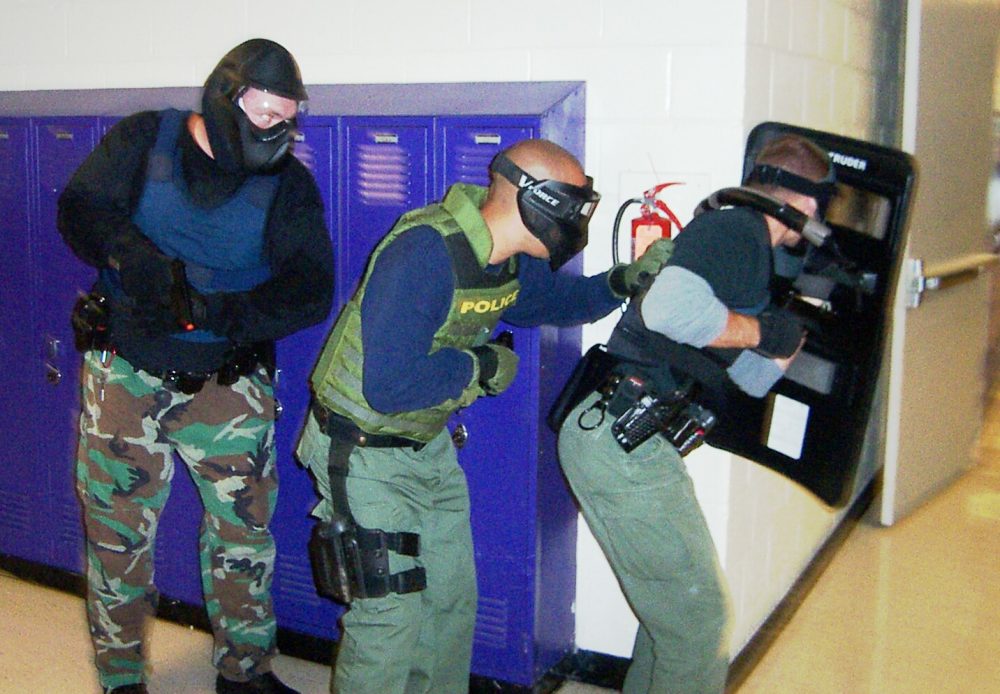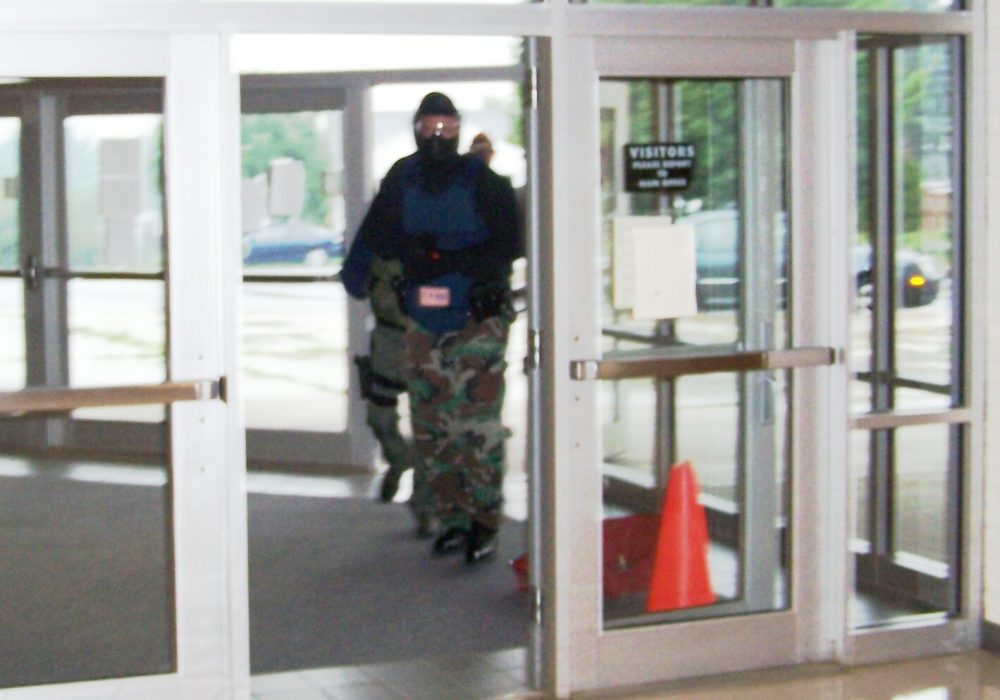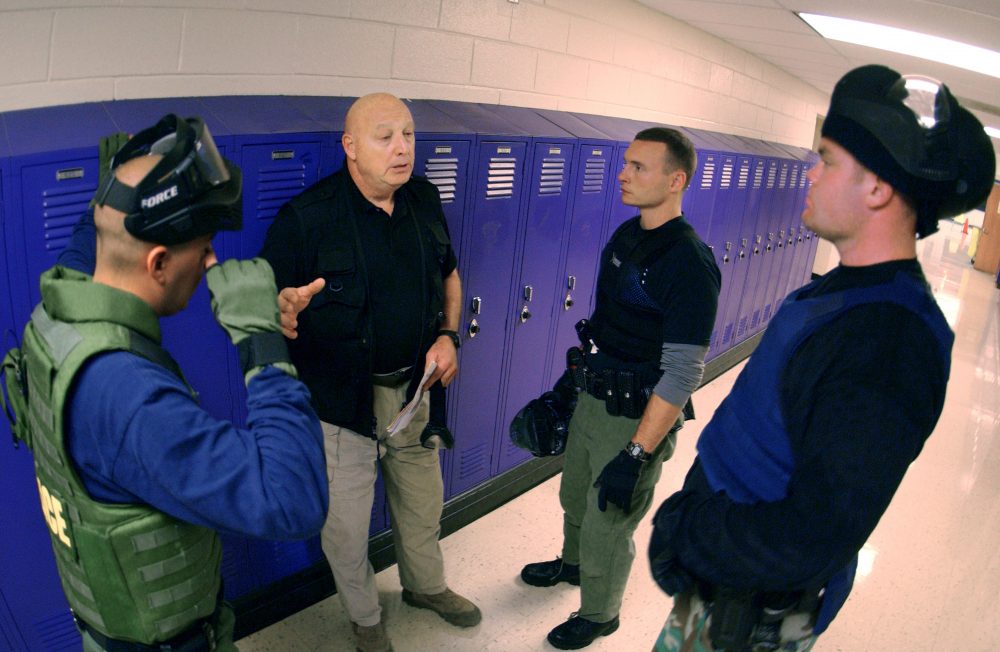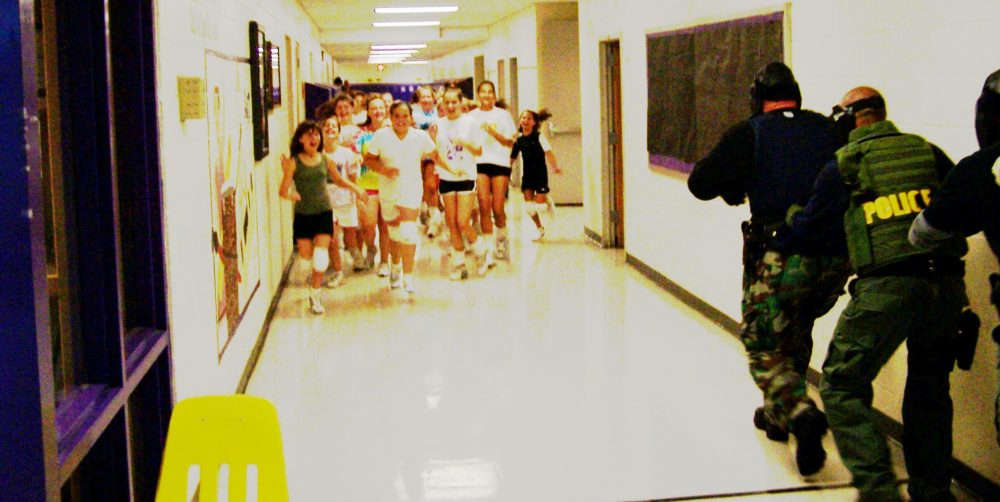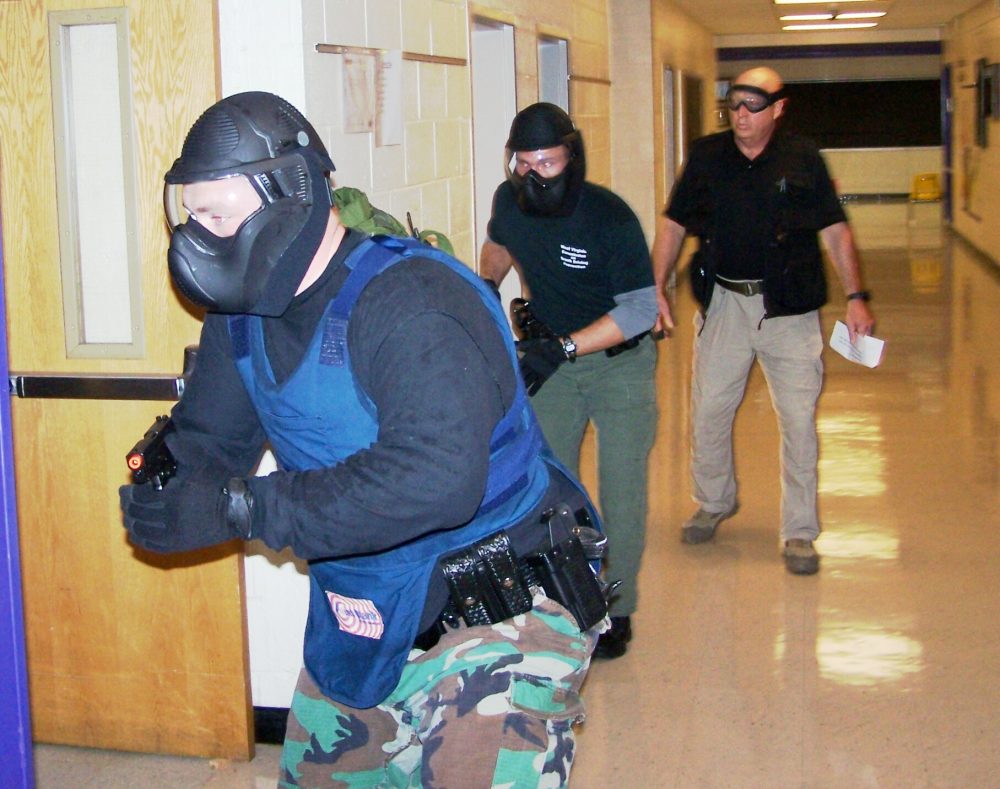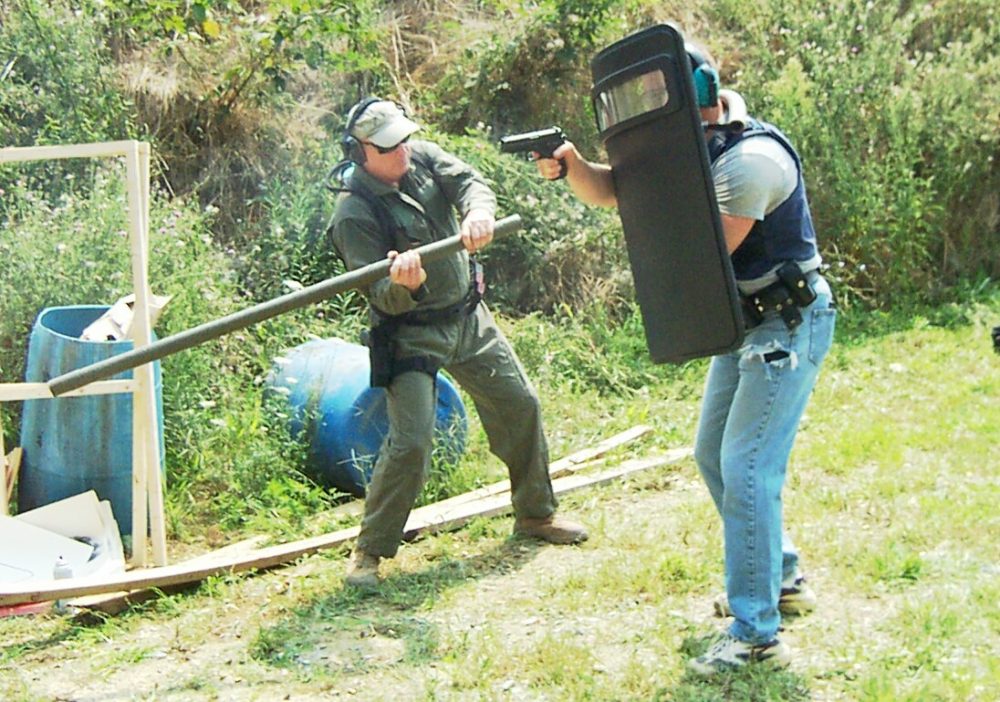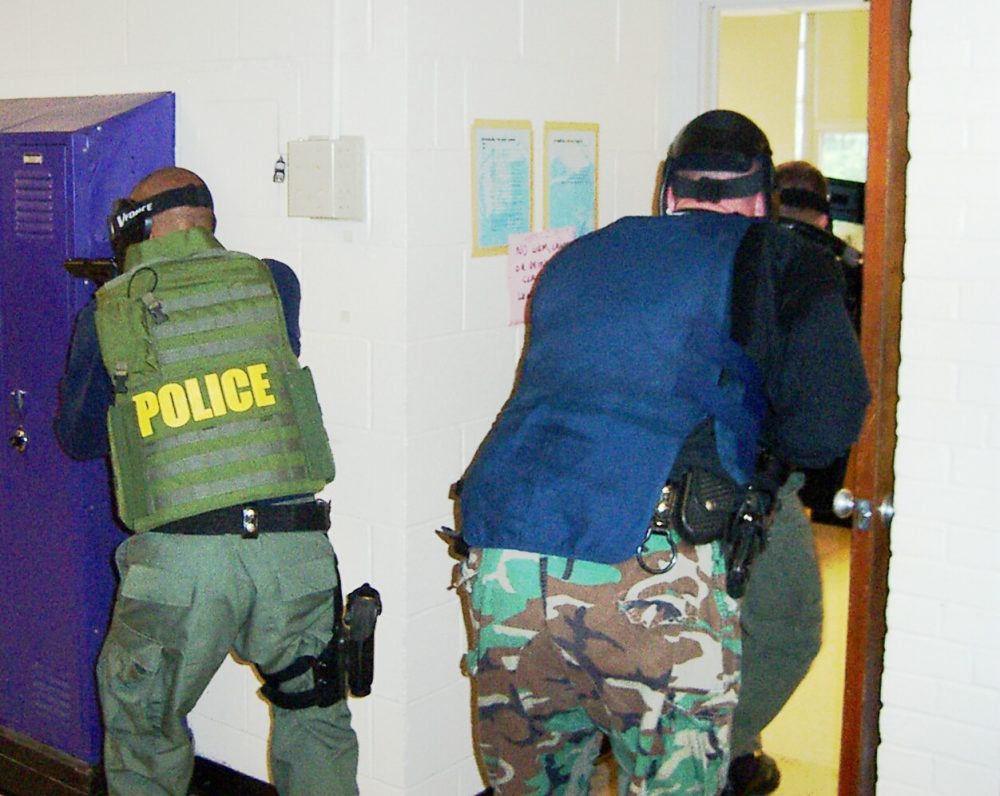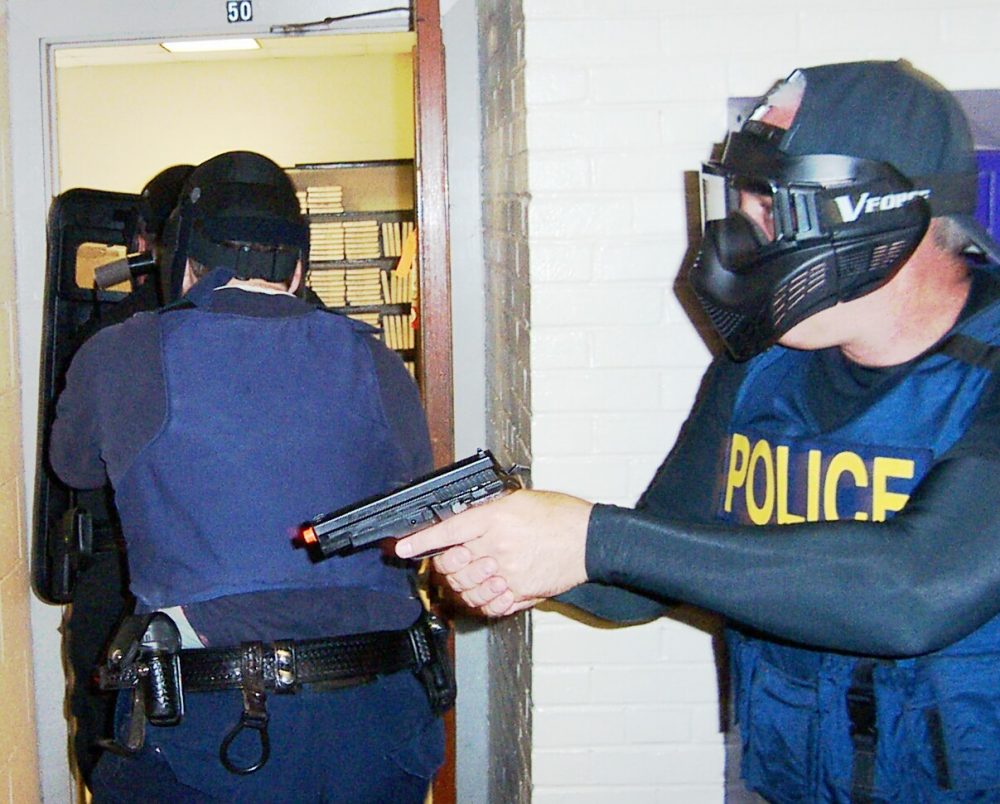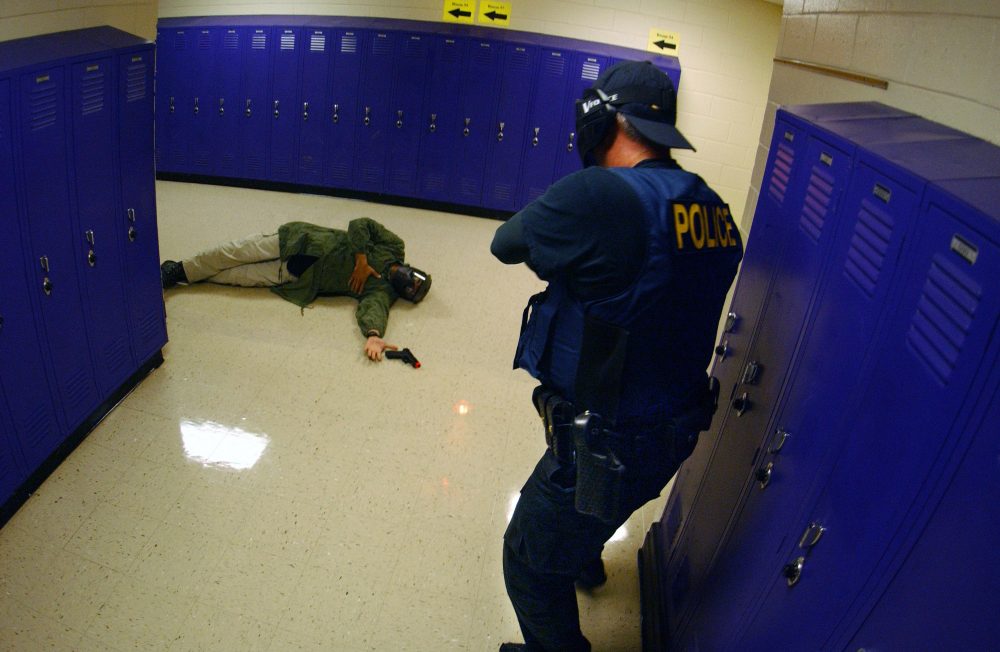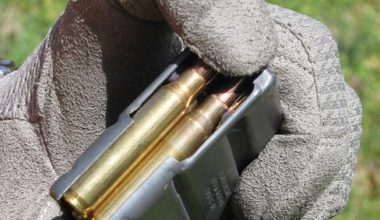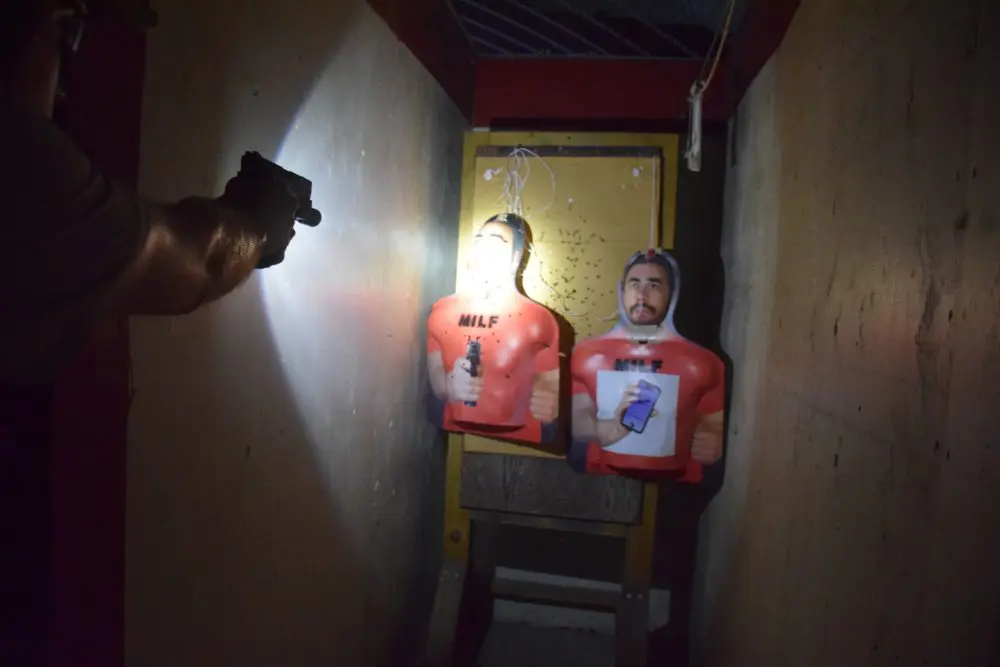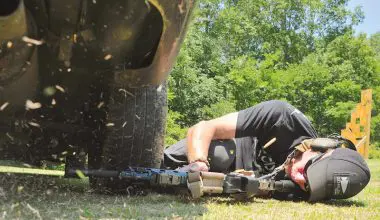First responders make tactical entry through school’s main entrance.
One of the areas of increasing law enforcement concern that small, municipal law enforcement agencies lack experience in are armed incursions and takeovers of schools.
I recently participated in a three-day training course consisting of two days of first responder tactics and range time with long and short guns—including live fire shield and dynamic entry work. The third day consisted of Airsoft-based force-on-force scenarios conducted at a target school where the initial tactical training occurred. Middle or junior high schools are generally selected for this training, to reflect Russia’s Beslan school demographics and because, according to recent intelligence, Islamic terrorists continue planning to abduct students where “the girls are old enough to rape and the boys too young to fight back.”
With the mantra, “train for the worst case scenario” in mind, the history of school assaults by terrorists and criminals in Israel, Djibouti, Europe, Russia and America are examined in a typical 24-hour training session and, from these examples, intelligence and training requirements are identified and given priorities by the department. Officers are reminded that on scene reactive information will be laced with emotion and not completely accurate. Chaos will rule, so pre-operational site surveys of schools, exercises with school officials and teachers, and the development of SOPs are imperative.
Ad hoc team is met by mass evacuation.
Table of Contents
AD HOC TEAM—CAREFUL HURRY
First responders may be faced with a mass exit, which could mask terrorists or student perpetrator(s), or conversely a school lockdown, where students and staff are sequestered in locked and possibly barricaded classrooms. In the avenues of approach there may also be dead and/or wounded who cry out for assistance, but may have to be cared for by follow-on personnel. Although information is critical, speed is of the essence and, even with limited information such as, “Someone is inside shooting and killing people,” officers will have to proceed to the sound of the guns in a controlled and tactical manner (Careful Hurry) without the benefit of sufficient planning, inner and outer perimeters, but with the stone cold mindset that the mission is to stop the shooter(s) by any means.
If available, School Resource officers should be critical assets. If they have responded properly, they are probably engaging the suspects, and first responders may rally to their position unless tactics dictate otherwise. Common radio communications are a must for coordination and to prevent blue-on-blue fratricide.
Rear security follows room-clearing team. Instructor follows behind.
PREPAREDNESS—EXPECT THE UNEXPECTED
Opposing players could be lightly or heavily armed, including IEDs. “They” could be an individual or a group, with or without training or a plan. They could be centrally located or spread out throughout the institution. They may have demands and a plan for escape, or they may be suicidal. However, no matter their motivation, planning and training your mission remain the same. You and your partner force them to surrender, take them out, or exert so much pressure on them that they cancel themselves from life’s roster as soon as possible.
Shield training included shooting on move. Note padded neck strap.
They may be barricaded and gaining access may require some type of breaching capability. You may find your team outgunned and outmanned. No one expects you to commit suicide in the face of extreme odds, but the public expects police to do something. If you are able, you must fight with what you have on hand, but some equipment not normally carried in all patrol vehicles could prove invaluable. Consider the following:
- Additional ammunition
- Long guns. Shotguns should have slugs for hostage rescue and range. Include breaching rounds.
- Long and short gun lights
- Ballistic shields
- Mechanical breaching tools (Ram, sledgehammer & Hooligan tool)
- Ballistic helmets
- Diversionary grenades/pyrotechnics
Response operations can be broken down into three phases: Approach & Penetration, Interior Actions and Evacuation (which will be conducted by follow-on support personnel—not first responders).
NOTE: The time available to the responding ad hoc team, the level of training and the exigency of the situation will determine the degree to which the following tactics and equipment can be employed.
Team “lips” around corner with shield. Trainers do not advocate maintaining physical contact with each other in manner displayed in stack. Keep both hands on firearm. Note shield driver keeps pistol behind shield until contact is made.
Approach & Penetration
A team should consist of a minimum of two men. More are preferable, but under extremely exigent circumstances and where additional personnel will not arrive in a timely manner, this does not preclude one officer from violating these “rules” and proceeding against the suspect(s) by himself. Again, time is of the essence and pressure must be exerted against the shooter(s) as soon as possible.
The senior man within whose jurisdiction the incident occurs will usually act as team leader. However, experience should trump rank and other considerations. Place the most experienced and capable officers in lead positions.
Your most likely rally point will be the school’s front entrance, where you will meet school officials to gather immediate on-scene intelligence, but consider another, less direct approach if some planning en route can be conducted.
Communicate your location, time and point of entry (POE) to dispatch. If possible, leave an officer or a responsible adult at your POE to meet and brief arriving police units. This is critical to avoid blue-on-blue incidents.
Assume your presence is known or at least expected. Keep your plan simple and the flow of assault in one direction. Do not use multiple entry points. If other officers are available and not used in the internal actions phase, have them cover and block all exits.
Employ a combination of law enforcement, safety clears and dynamic tactics. Adjust to fit the terrain and situation. Establish a formation that includes point and rear guard and one that supports 360-degree security, observation and weapons response. Observe vertically as well as horizontally.
Rear security in four-man team. Two enter and clear, and two remain outside for front and rear hallway security.
Interior Actions
Unless you know exactly where the suspect(s) are, perform a brief listening pause after entry. Keep talk and noise to a minimum, but communicate when appropriate via arm and hand signals and controlled voice.
Employ building construction as concealment and cover, but stay off walls and floors to avoid the effects of ricochets.
Treat hallways as rooms and enter accordingly. Move down one side, but be prepared to move from one side to the other as required. Corners should not be hugged. Consider the following when negotiating and clearing corners:
- Use mirror to visually clear wall and near corner
- Employ visual leverage
- Roll out or quick peek
- Ballistic shields (Lipping techniques)
- Verbal call out (ruse)
- A room is not under control until it is physically cleared.
Airsoft guns are very cost effective method of force-on-force training. Eye protection is mandatory.
If the entry team is composed of four or more officers, moving down both sides of the hallway may be advantageous. Coordination is important, and one team can provide cover for the other team while it advances, enters and clears rooms in a methodical manner. The team that remains in the hall—which should be kept to an absolute minimum—can also act as backup for the other team should they run into a “hot” room and need help.
Depending on the size of the team and the size of the building, the point position can be continuous or rotated. Neither point nor hallway security should turn their backs on the direction of flow. However, with a two-man team, this may be impossible, and splitting a door will require one man to do so. The point man in the lead position is “bumped” across the doorway and moves a sufficient distance down the wall to give the entry team room to affect entry. A three-man team is ideal for this.
Officer has employed visual leverage and taken down subject with Airsoft pistol.
In larger teams, the team leader is positioned in the number three spot in the stack and should resist committing himself to clearing a room, so that he retains control over the team. This is difficult with a small team, because all hands must be fighters.
If “Blitz Clearing” is appropriate, the team will bypass all danger areas and move rapidly to the shooter’s location. However, visual 360-degree awareness and observation must be maintained as the team moves in a “careful hurry” manner.
Classroom Clearing
Doorways are also a form of corners that lead to more interior room corners and can be approached and cleared in a similar manner. If dynamic entry is considered too dangerous, clear as much of the room visually from the doorway by using the above methods before physically penetrating the room.
If the door is open, a single side entry can be made from a stack along the wall. Some teams will bump a man across an open door relying on action-versus-reaction to move him past the door safely. That man can act as point security or make a split-side door entry. If a three-man team is working, one remains in the hallway as security. When entry is made, he can move back into the doorway for additional protection. Hallways are long fatal funnels, and officers should spend as little time as possible in them.
If a door is closed, set up security and determine how it opens. Test the doorknob. If the door is locked, officers may have to breach. Consider a wall breach and gun porting to control the room from outside. However, be aware that if interior walls can be breached with an axe or sledgehammer, the suspect’s bullets can penetrate them.
Instructor critiques training scenario.
One man accesses the doorknob and acts as breacher. The other provides security on the door and will be the first to enter dynamically or clear visually from the doorway before entry. Near corners are the most critical. Clear visually or physically as the two men either slant rush or buttonhook into the room. Run the near walls, turn in and dominate the room. Stop short or move past corners. Do not stop on a corner—corners attract fire. Stay about an arm’s length off the wall. If the room is “hot” and entry is deemed necessary, consider some type of diversion before penetration.
Do not stop or pause in the door. Move to your assigned or selected position in the room and engage any armed threats that refuse to surrender. Some threats may have to be confronted while on the move.
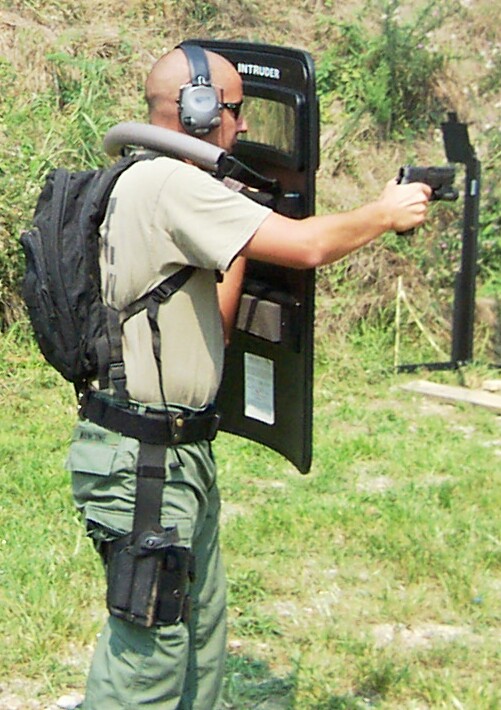
Rooms are divided in half by an imaginary centerline. If the first man moves left, the second man in most cases should move right. Each man is responsible for his side of the room, but each man can fire into the other’s area of responsibility. Officers’ fire is interlocking and overlapping. Keep your firearm’s muzzle three feet off your partner’s muzzle to avoid potential fratricide. Do not shoot behind your partner or back toward the open door for obvious reasons.
Time and circumstances permitting, rooms can be searched by one man as the other covers, or each side can be checked sequentially by the man responsible for his respective side.
Prior to exiting a room, perform a tactical reload if any shooting has occurred. Restack in the room and always re-enter a hallway with your weapon’s full potential available to you. Announce “Coming out” to hallway security and visually check the hallway before re-entry. If possible under the circumstances, lock or wedge the door shut and mark as cleared.
Students practiced the above-described techniques for two days. On the third day and final day of the course, they were introduced to force-on-force training using Airsoft guns.
FORCE-ON-FORCE
Point Shooting Prevailed
The strain of “killing without death” was graphically displayed as copious amounts of sweat rolled down faces and soaked clothing. Eyeballs were dilated in an effort to gather as much visual information as possible as the men moved purposely, but cautiously, down long, dimly lit passageways and into flanking rooms. In some scenarios, each room was cleared sequentially—a tiring, tension-filled, but much safer approach. In other problems, it was high risk/ high gain tactics and officers “Blitz Cleared” directly to the subject’s location. After creating a simple physical diversion, forced entry with Airsoft carbines and handguns at the ready followed, and subjects were showered with plastic missiles that stung enough to take seriously. In rapidly unfolding close quarter combat, no one remembered referencing their sights, and this may be one of several skills that separate highly trained tactical team operators from first responders, i.e., the ability to obtain a sight picture for guaranteed surgical shooting under extreme stress.
Enemy Focus
Noise was kept to a minimum, and arm and hand signals prevailed until contact occurred. With the exception of those actually pulling a trigger, there were spurts of desperate verbalization on both sides of the blackboard. In almost every scenario where there was movement to contact, the “suspects” initiated the exchange of fire. Without diversionary devices and ballistic shields, entry teams took casualties. However, the aggressors admitted that with the team in proximity to them, they forgot about killing hostages and focused on setting up some kind of defense.
All hands readily acknowledged that this protective reaction might not occur with individuals and/or groups who are suicidal and they would either fight until they were eliminated or kill themselves when it looked like authorities were about to confront them.
ONLY THE MAGNITUDE WILL BE DIFFERENT
The entire 24-hour force-on-force training episode—which included shield and range work—was a very sobering experience for all involved. Local reporters and photographers attended the last phase of the training, and a favorable article appeared in the area’s newspaper. It reminded citizens that Anywhere, USA is vulnerable to either low-level criminal or high-level terrorist takeovers, with the results being the same—death and destruction. Only the magnitude may be different.
The organization that conducted this course was CSSA, Inc. If your department needs to reinforce its active shooter training, contact CSSA at (540) 786-4928 or by e-mail at [email protected].
